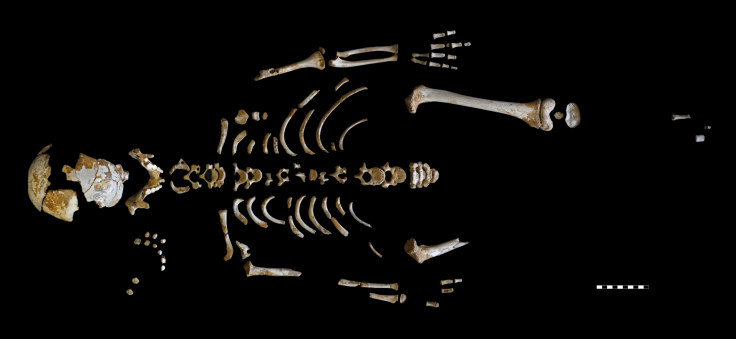Old Bones Show Neanderthal Kids Were A Lot Like Modern Human Children

Neanderthals were a more primitive relative of human but we have a lot more in common with these extinct group than it may appear. Scientists have just discovered that Neanderthal children grew in much the same way modern human kids do.
Scientists analyzed the 49,000-year-old skeleton of a Neanderthal child to determine how kids from this ancient human species developed. The bones, which were found in northern Spain and belong to a child who was between 7 and 8 years old, show “an overall growth rate similar to that of modern human children,” according to their study in the journal Science.
The study explains that previous research has indicated faster growth in Neanderthals based on analysis of their teeth. While this new analysis used teeth to determine the age of the child being studied, the researchers also had other portions of the head to work with, as well as other body parts.
“Maturation of most elements fell within the expected range of modern humans at this age,” the scientists wrote.
But they found small differences in sections of the vertebrae, which were still at a stage of development modern human kids reach a couple of years earlier — some of the bones had not yet fused. A close look at features at the base of the skull also “suggest that brain growth was not yet completed.” While a modern human child would have a brain about 95 percent the size of an adult’s by that time, this Neanderthal kid’s brain was at 87.5 percent capacity.
The researchers noted, however, that the differences they observed might have more to do with the functions of the Neanderthal body and “energy constraints” related to growth as opposed to differences in growth rates between Neanderthals and modern humans on a fundamental level.
Large brains take a lot of energy to develop, particularly during childhood, for example.
Neanderthals had larger skulls than modern humans and it’s possible their brains were larger as well.
According to the researchers, their findings suggest that Neanderthals grew over a longer period of time than modern humans do, as opposed to simply growing faster in order to reach their larger size in the same amount of time.
The juvenile bones came from a site in Asturias known as the El Sidrón cave system, where several other Neanderthal juveniles and adults, relatives from the same community, have been found.
It is unclear whether the child was a boy or a girl because DNA could not confirm the sex, although the shape of the bones “strongly suggests that it was male,” according to the study. The child was close to 60 pounds and more than 3.5 feet tall at the time he died.
The researchers could tell other things about the child’s life through his bones, such as that he was probably right-handed.
They do not know how he died, as his bones showed no signs of disease.
“Neanderthals provide us with an important perspective on our own biology,” the study says. “Both modern humans and Neanderthals arose from a recent common ancestor along independent evolutionary lines, becoming large-brained hominins but with contrasting body forms. … Clarifying differences and similarities in growth patterns between extinct humans, especially Neandertals, and modern humans helps us better define our own phylogenetic history.”
© Copyright IBTimes 2024. All rights reserved.











